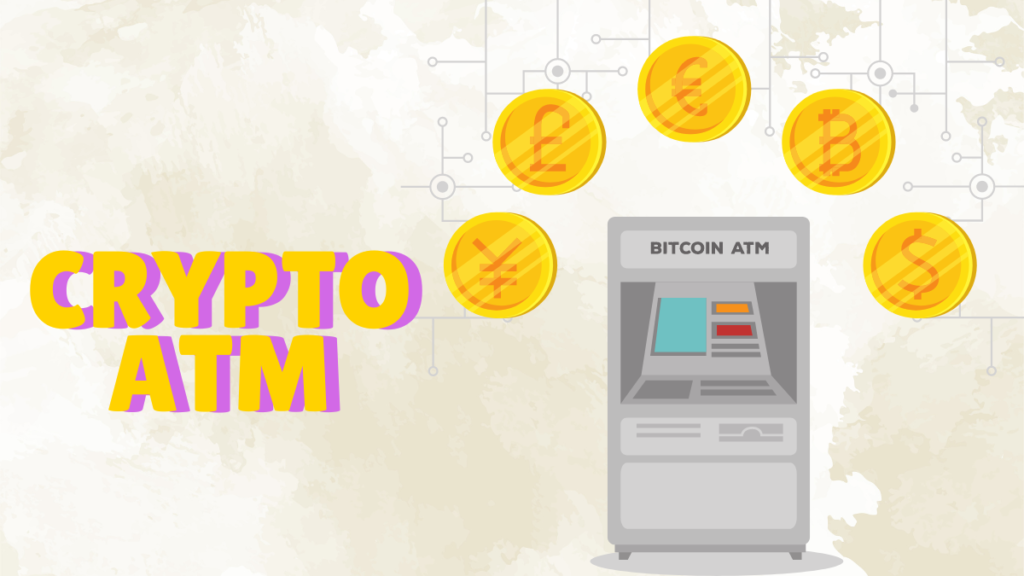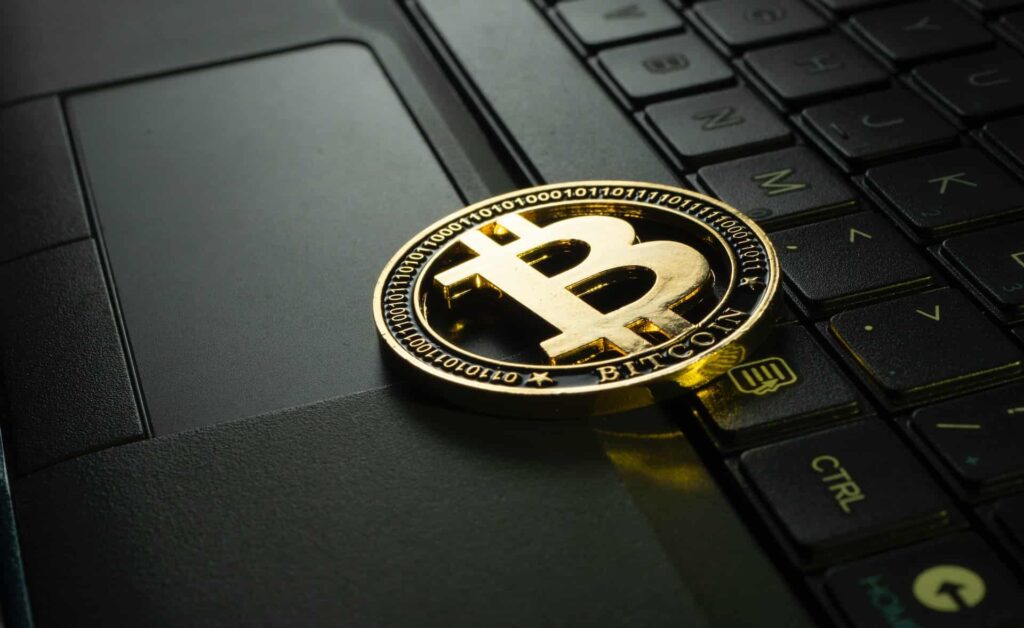
Bitcoin ATMs (BTMs) have become increasingly popular as cryptocurrencies gain mainstream attention. If you’re curious about how they operate, this guide will break down the inner workings of Bitcoin ATMs and help you understand how you can use them to buy or sell Bitcoin. Whether you’re new to Bitcoin or an experienced user, this article will cover everything you need to know.
What Is a Bitcoin ATM?
Bitcoin ATMs are physical machines that allow users to buy or sell Bitcoin using cash or debit cards. Unlike traditional ATMs that connect to a bank, Bitcoin ATMs connect directly to a cryptocurrency exchange or wallet, allowing users to conduct transactions involving Bitcoin.
These machines provide a convenient way for users to convert cash into Bitcoin or vice versa, without the need to go through online exchanges. Some Bitcoin ATMs support not only Bitcoin but also other cryptocurrencies such as Ethereum, Litecoin, and Bitcoin Cash.
Types of Bitcoin ATMs
There are two main types of Bitcoin ATMs:
- One-Way ATMs (Buy-Only ATMs): These machines allow you to buy Bitcoin but not sell it. You insert cash into the ATM, and Bitcoin is sent to your digital wallet.
- Two-Way ATMs (Buy-and-Sell ATMs): These machines offer both buying and selling options. You can buy Bitcoin by inserting cash or sell Bitcoin by sending it from your wallet to the ATM.
The type of ATM available can depend on the provider, location, and local regulations.
How Do Bitcoin ATMs Work?

Bitcoin ATMs operate similarly to traditional ATMs but are designed to facilitate cryptocurrency transactions. Here’s a step-by-step breakdown of how they work:
Step 1: Verification and Compliance
Before using a Bitcoin ATM, users are typically required to verify their identity. The verification process can vary based on the country and the ATM provider. Common verification methods include:
- Phone number verification: Some ATMs require you to enter your phone number to receive a verification code.
- ID scan: Many machines require scanning your government-issued ID to comply with Anti-Money Laundering (AML) and Know Your Customer (KYC) regulations.
- Facial recognition or fingerprint scan: In some regions, more advanced verification methods, such as biometric data, may be required.
Once the verification process is complete, the user can proceed with their transaction.
Step 2: Select Transaction Type
After verification, the user can choose whether they want to buy or sell Bitcoin. The interface typically presents both options, and once selected, the ATM will guide the user through the specific steps required for that transaction.
Step 3: Input Bitcoin Wallet Information
If you’re buying Bitcoin, the machine will ask for your Bitcoin wallet information. Users can either:
- Scan a QR code: Most users prefer to scan their wallet’s QR code using the ATM’s built-in scanner. This ensures that the Bitcoin is sent to the correct wallet.
- Manual entry: Some machines allow manual input of the wallet address, though this can be less convenient and prone to errors.
If you are selling Bitcoin, you will be asked to send Bitcoin from your wallet to the ATM’s wallet address.
Step 4: Insert Cash or Send Bitcoin
For buying Bitcoin, users will insert cash into the ATM’s bill acceptor. The ATM will automatically calculate the equivalent amount of Bitcoin based on the current exchange rate and any transaction fees.
For selling Bitcoin, users will send the specified amount of Bitcoin to the ATM’s wallet address. Once the transaction is confirmed on the blockchain, the machine will dispense cash.
Step 5: Transaction Fees and Confirmation
Most Bitcoin ATMs charge transaction fees, which can range from 5% to 15%, depending on the provider. These fees are typically higher than those charged by online exchanges due to the convenience and anonymity offered by the ATM.
Once the transaction is completed, users receive a confirmation of their transaction, either in the form of a printed receipt or a confirmation on their phone.
Step 6: Receiving Bitcoin or Cash
For buy transactions, Bitcoin is sent directly to the user’s digital wallet. The amount of Bitcoin received will depend on the current market price and transaction fees.
For sell transactions, the ATM will dispense cash once the Bitcoin network confirms the transaction. The confirmation time can vary depending on the Bitcoin network’s current traffic, but it typically takes anywhere from a few minutes to an hour.
Benefits of Using Bitcoin ATMs

Bitcoin ATMs provide several advantages for users who prefer using cash or who may not have access to traditional banking services. Here are some of the key benefits:
Accessibility and Convenience
Bitcoin ATMs offer a quick and convenient way for users to buy or sell Bitcoin. Unlike online exchanges, which may require users to link a bank account or credit card, Bitcoin ATMs allow for direct cash transactions. This makes them accessible for people who may not have access to traditional banking services.
Privacy and Anonymity
Bitcoin ATMs can offer more privacy than traditional exchanges. While most ATMs still require some level of identity verification, they typically don’t require users to create accounts or link bank information. This makes them a popular choice for those who value privacy in their cryptocurrency transactions.
Immediate Transactions
One of the main advantages of using a Bitcoin ATM is the speed of transactions. Users can purchase or sell Bitcoin within minutes, as opposed to waiting for days to complete bank transfers on online exchanges. This is particularly useful for users who need immediate access to Bitcoin or cash.
Drawbacks of Bitcoin ATMs

While Bitcoin ATMs are convenient, there are some drawbacks to consider:
High Transaction Fees
As mentioned earlier, the transaction fees for using Bitcoin ATMs are typically higher than those on online exchanges. These fees can range from 5% to 15%, which may deter some users from using them for large transactions.
Limited Availability
Bitcoin ATMs are not yet as widely available as traditional ATMs, and their distribution tends to be concentrated in major cities. Users in rural areas may have difficulty finding a nearby machine.
Transaction Limits
Most Bitcoin ATMs impose daily transaction limits, which can vary based on local regulations and the ATM provider. These limits may restrict the amount of Bitcoin you can buy or sell in a single transaction.
Are Bitcoin ATMs Safe to Use?
Bitcoin ATMs are generally considered safe, as long as they are operated by reputable companies and comply with local regulations. However, users should be cautious of scams and ensure that they are using an ATM from a trustworthy provider. It’s also essential to safeguard your Bitcoin wallet information and be aware of the transaction fees involved.
Bitcoin ATMs provide a convenient and efficient way to buy or sell Bitcoin using cash. While they offer many advantages, such as privacy and immediate transactions, users should be aware of the higher fees and potential transaction limits. As Bitcoin continues to grow in popularity, Bitcoin ATMs will likely become more widespread, making cryptocurrency even more accessible to the general public.